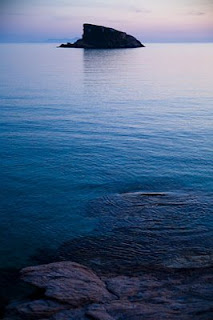 Absinthe is traditionally a distilled, highly alcoholic (45%-75% ABV) beverage. It has similar effects to anise-flavored spirit derived from herbs, including the flowers and leaves of the herb Artemisia absinthium, also called wormwood. Absinthe is typically of a natural green color but is also produced in a clear style. It is often called "the Green Fairy". Although it is sometimes mistakenly called a liqueur, absinthe is not bottled with added sugar and is therefore classified as a liquor. Absinthe is unusual among spirits in that it is bottled at a high proof but is normally diluted with water when it is drunk. Absinthe originated in the canton of Neuchâtel in Switzerland. It achieved great popularity as an alcoholic drink in late 19th- and early 20th-century France, particularly among Parisian artists and writers. Due in part to its association with bohemian culture, absinthe was opposed by social conservatives and prohibitionists. Charles Baudelaire, Paul Verlaine, Arthur Rimbaud, Vincent van Gogh, Oscar Wilde, and Aleister Crowley were all notorious "bad men" of that day who were (or were thought to be) devotees of the Green Fairy. Absinthe was portrayed as a dangerously addictive psychoactive drug. The chemical thujone, present in small quantities, was blamed for its alleged harmful effects. By 1915, absinthe had been banned in the United States and in most European countries except the United Kingdom, Spain, Portugal, and the Austro-Hungarian Empire. Although absinthe was vilified, no evidence has shown it to be any more dangerous than ordinary liquor. Its psychoactive properties, apart from those of alcohol, had been much exaggerated. A revival of absinthe began in the 1990s, when countries in the European Union began to reauthorize its manufacture and sale. As of February 2008, nearly 200 brands of absinthe were being produced in a dozen countries, most notably in France, Switzerland, Spain, and the Czech Republic.
Absinthe is traditionally a distilled, highly alcoholic (45%-75% ABV) beverage. It has similar effects to anise-flavored spirit derived from herbs, including the flowers and leaves of the herb Artemisia absinthium, also called wormwood. Absinthe is typically of a natural green color but is also produced in a clear style. It is often called "the Green Fairy". Although it is sometimes mistakenly called a liqueur, absinthe is not bottled with added sugar and is therefore classified as a liquor. Absinthe is unusual among spirits in that it is bottled at a high proof but is normally diluted with water when it is drunk. Absinthe originated in the canton of Neuchâtel in Switzerland. It achieved great popularity as an alcoholic drink in late 19th- and early 20th-century France, particularly among Parisian artists and writers. Due in part to its association with bohemian culture, absinthe was opposed by social conservatives and prohibitionists. Charles Baudelaire, Paul Verlaine, Arthur Rimbaud, Vincent van Gogh, Oscar Wilde, and Aleister Crowley were all notorious "bad men" of that day who were (or were thought to be) devotees of the Green Fairy. Absinthe was portrayed as a dangerously addictive psychoactive drug. The chemical thujone, present in small quantities, was blamed for its alleged harmful effects. By 1915, absinthe had been banned in the United States and in most European countries except the United Kingdom, Spain, Portugal, and the Austro-Hungarian Empire. Although absinthe was vilified, no evidence has shown it to be any more dangerous than ordinary liquor. Its psychoactive properties, apart from those of alcohol, had been much exaggerated. A revival of absinthe began in the 1990s, when countries in the European Union began to reauthorize its manufacture and sale. As of February 2008, nearly 200 brands of absinthe were being produced in a dozen countries, most notably in France, Switzerland, Spain, and the Czech Republic.http://en.wikipedia.org/wiki/Absinthe
-


 -
-PICASSO COCTAIL
40 ml. Absinth
40 ml. apple juice
20 ml. triple sec
15ml. fresh lime juice
15 ml. glycose syrup
40 ml. apple juice
20 ml. triple sec
15ml. fresh lime juice
15 ml. glycose syrup
We add all the stuff in a shaker ,with many ice ,and we stir powerfully.Strain in a " high ball"glass in which we have add
ice.
ice.
We decorate with lime ,apple.....
simple and delicious.....
simple and delicious.....
40 ml. Absinth
30 ml. Berentzen liqueur
20 ml Creme de pineapple
50 ml cranberry juice
15 ml. fresh lime juice
We shake good all the stuff in a shaker ,with ice.
Strain in a " high ball"glass in which we have add freshice.
We decorate with spiral lime .




